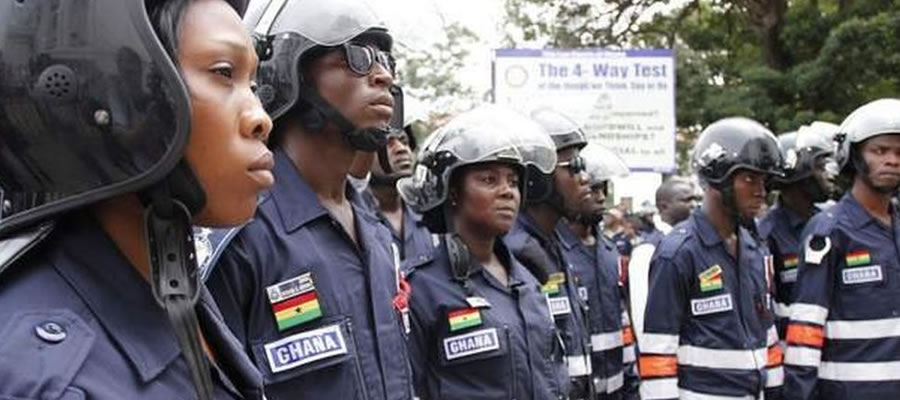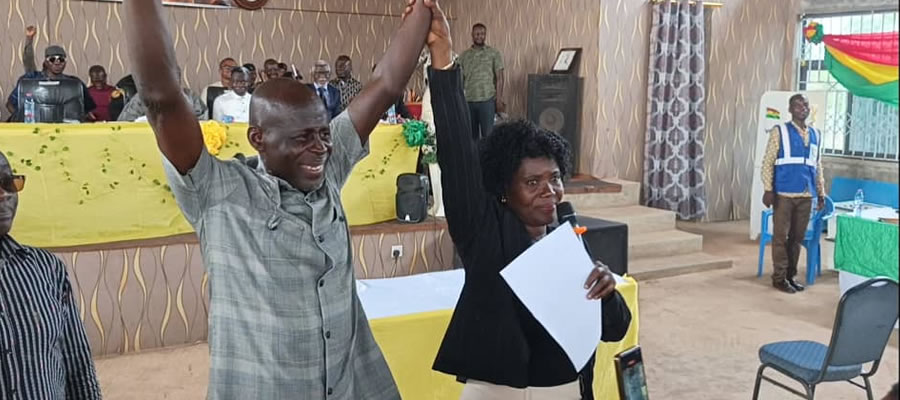

Population Size and Growth Rates: The Population of the District is 83.059 (48.1%). District Database, 2004 with respective male and female populations of 37,904 (48.8%) and 40,288 (51.52%). The growth rate of district is about 2.9% with total fertility rate estimated to be 6.2.
Age Distribution
The results from the 2004/2005 District Database shows that the district has significant number of its population being children and the youth who are mostly dependents as they are either too young to be working or are in school or learning a trade. The age dependency ratio is 1:1.1. The Age Distribution of the district is presented in the table below
Population Distribution: The district can generally be described as rural and has linear settlement pattern. Out of the 41 settlements only eleven (11) were captured under the first twenty (20) settlements as classified by the 2000 Population and Housing Census and of the 11, only four (4) settlements had populations of Over 5,000 people.
These settlements are Sampa (11,348), Duadaso No. 2 (6,827), Suma-Ahenkro (6,288), and Goka (5,775). Only the four settlements with populations of over 5,000 could be described as towns. All other settlements that did not appear here are rural as their populations do not come any where near the minimum town population of 5,000.
The table below provides detailed information on the 11 settlements that were included in the first 20 settlements as classified by the 2000 Population and Housing Census for the then Jaman District.
As can be seen from the table, only four settlements with populations of over 5,000 could be described as towns. All other settlements including the 30 that did not appear here are rural as their populations do not come any where near the minimum town population of 5,000.
Spatial and Housing Characteristics: The district has Forty-one (41) major towns and villages, 7,504 housing facilities made up of 1,289 (17.18%), single block houses, 9 (0.12%) storey block houses and 6,206 (82.70%) other houses which have been constructed with bricks, mud or wood and either roofed with iron sheet, thatched or wood. The district has 12,627 households with average household size of 6.2. The district has both urban and rural characteristics. Major towns with population of 5,000 or more include Sampa, Suma-Ahenkro, Duadaso No.2 and Goka.
About 85% of the built environment of the district is unplanned giving way to unauthorized structural development. Most of the existing planning schemes have become outmoded due to social and economic variations and therefore do not conform to desired situation leading to haphazard development
Environmental Situation
Natural Environment
With the district falling under two vegetative covers, it is facing serious threat of devastation by human and animal population pressure such as housing expansion, farming, overgrazing, bushfires and timber exploitation. It is evident that given the current situation, the rate of devastation of the scarce environmental resources will hasten if calculated attempts are not made to arrest the situation.
Forest Reserve and Plantations
Currently, there is no forest reserve in the district. Wood plantations are established by individuals, groups and communities. However, there are isolated sacred and reserved places around water bodies and shrines which help to protect the environment.
Administration and Governance
Administration and Governance
Modern Political Administrative System: By statutory declaration as contained in the Local Government Act 1993, Act 462, the Jaman North District Assembly is the highest planning, political and administrative authority in the district. The Assembly has a total membership of thirty (30) with 21 elected members and 9 appointees including the District Chief Executive (DCE). The DCE is both the political and administrative head of the Assembly and is ably supported by the Co-ordinating Director and other staff of the Assembly.
The Assembly works through the sub-committee system and apart from the five mandatory sub-committees that work under the Executive Committee, the Assembly has two other committees (Education and Complaints and Publicity Sub-Committees) to facilitate its work. Currently, the sub-committees in the Assembly are;
- Development Planning Sub-Committee
- Works and Infrastructure Sub-Committee
- Finance and Administration Sub-Committee
- Social Services Sub-Committee
- Justice and Security Sub-Committee
- Education Sub-Committee
- Complaints and Publicity Sub-Committee
- Decentralized Departments: Currently, the existing and operational decentralized departments in the district are;
- District Directorate of Health
- District Directorate of Agriculture
- District Directorate of Education
- Departments of Social Welfare and Community Development
There are also other units/agencies working under the District Assembly. They are the Environmental Health Unit, the National Services Secretariat, the National Disaster Management Organization (NADMO) and the Meteorological Department.
The Sub-Structure
As part of deepening decentralization, democracy and good governance in the district, seven (7) sub-structures are in place to ensure grassroot and popular participation in the development process. They are Sampa Town Council with its capital at Sampa, Nafana East Area Council with its capital at Duadaso, Suma Area Council with its capital at Suma-Ahenkro and Goka Area Council with its capital at Goka.
Others are Asiri-Jankufa Area Council with its capital at Asiri, Nafana West Area Council with its capital at Jamera and Kwatwoma Area Council with its capital at Seketia. However, the sub-structures are not functioning effectively as expected due to multiple factors including inadequate logistics, staff and motivation.
There are a number of units committees although not very functional, support both the area councils and the Assembly in the discharge of their duties.
Analysis of Community, Town and Area Councils Needs and Aspirations
The needs and aspirations of the Communities, Area and Town Councils are analysis in the table below. The analysis showed that the most preferred needs of the communities and Area Councils are provision of school infrastructure, electricity, potable water, construction and up-grading of roads/bridges, construction of health facilities and provision of sanitation facilities. The rest are provision of market facilities, agro-processing factory/machines, community centres, Post Office, irrigation facilities, settlement layout and construction of a modern town park.
Date Created : 11/16/2017 3:30:54 AM












 facebook
facebook
 twitter
twitter
 Youtube
Youtube
 +233 593 831 280
+233 593 831 280 0800 430 430
0800 430 430 GPS: GE-231-4383
GPS: GE-231-4383 info@ghanadistricts.com
info@ghanadistricts.com Box GP1044, Accra, Ghana
Box GP1044, Accra, Ghana